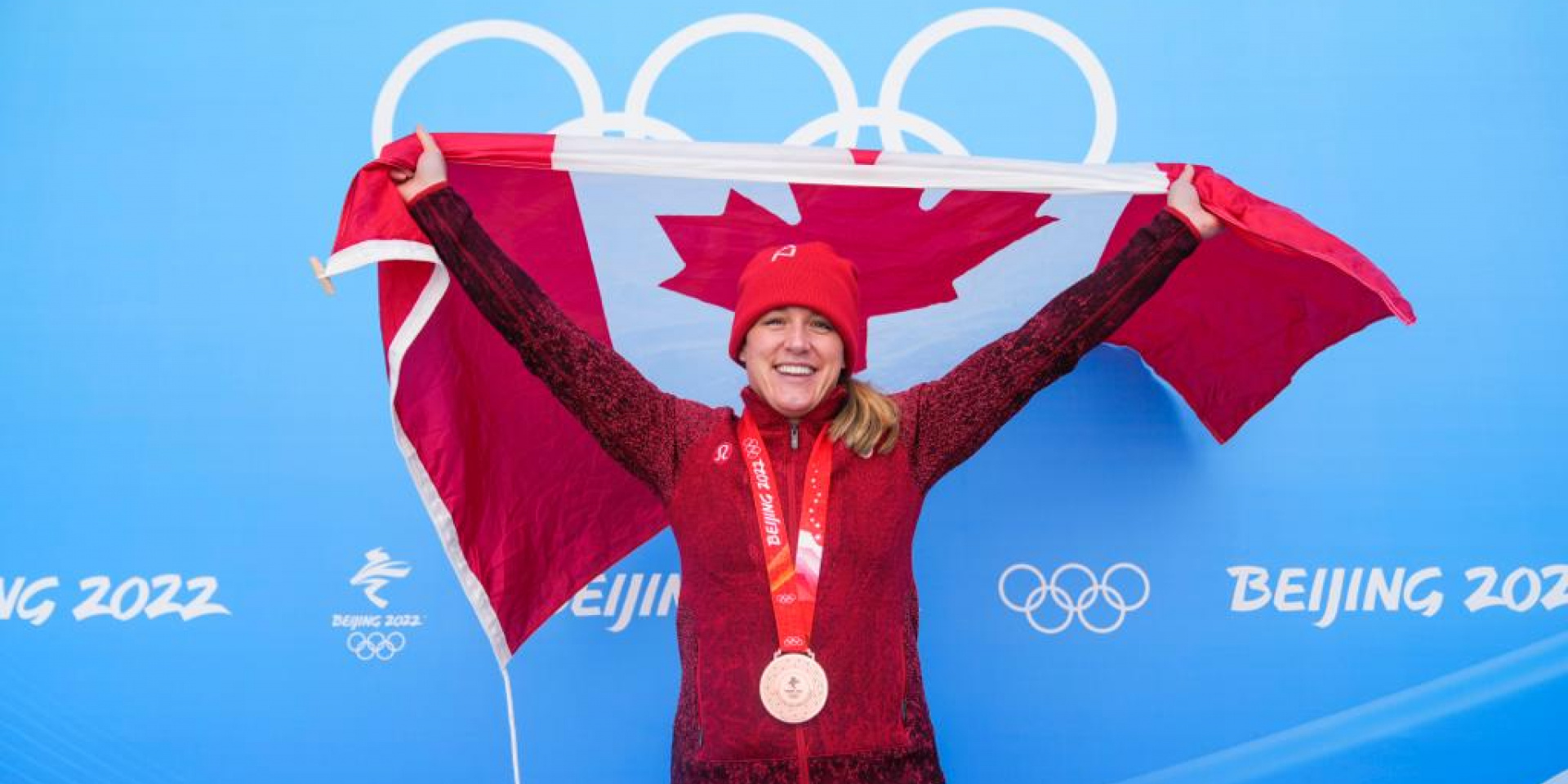Christine de Bruin claims Olympic bronze for Canada in monobob debut
YANQING — Christine de Bruin and El Diablo have come to terms, and the monobob pilot’s deal with the devil now includes an Olympic bronze medal.
The 32-year-old from Stony Plain, Alta. named her sled El Diablo because it was nothing short of a hell ride for her when they first joined forces just over a year ago. She’s been an accomplished two-woman bobsled pilot for years but struggled mightily to find the right steering setup in her new craft. She complained that when she hit the wall in it, the sled acted as if the world was ending.
But on Monday, under the pressure of monobob’s debut at the Olympics, de Bruin held onto the reins through the final two runs of the Olympic competition and came out with her first medal. A hard-charging Elana Meyers Taylor of the United States had been fourth after the third run, but leapt over Germany’s Laura Nolte and de Bruin into the silver medal position with a fabulous final tour of the icy chute. Kaillie Humphries, who slid to bronze for Canada in the two-woman event at PyeongChang 2018, upgraded to gold for the United States here, and completed the all North American podium, such a rarity in bobsled.
“It means a lot of course,” de Bruin said of the medal. “It’s sweet. It’s insane. I don’t even know what to say right now. It’s so surreal, this moment.”
De Bruin’s run times were 1:05.12, 1:05.02, 1:05.38 and 1:05.51, a picture of consistency. Teammate Cynthia Appiah of Toronto struggled to find the line on the technical track and put down runs of 1:05.75, 1:05.53 and 1:05.78 and 1:05.98 to finish eighth. She was expecting much better from herself, but she’s an emerging pilot who was at the PyeongChang 2018 Olympics as an alternate brakewoman.
De Bruin won back to back races on the Monobob World Series this season and came to these Olympics as one of the drivers to watch, along with the two Americans, Appiah, Nolte and Australian Breeana Walker. This discipline has evened the playing field because all monobobs are standardized and manufactured by one German producer. The steering setups and seating positions can be tweaked, but there isn’t much of an equipment advantage to be gained, unlike the two-man, two-woman and four-man competitions in which German sleds have been the superior machines for ages. Nolte was the top German pilot here, finishing fourth.
“I really wanted to prove that I’m one of the best drivers in the world and I think with monobob you can really show that because we all have the same sled,” said de Bruin. “So it’s really easy to say whoever is the best will do the best.”
The key to becoming one of the best was a month-long driving camp at Whistler, B.C. after the World Cup tour wrapped up last spring. She needed time in the new sled and also got some valuable perspective from Bobsleigh Canada Skeleton driving coach Lyndon Rush, who jumped into the monobob to get a sense of its peculiarities.
“I just could not figure it out,” de Bruin said earlier this season. “We went to Whistler, tinkered with it to make the sled more drivable, and just crushed runs like crazy. Lyndon Rush was driving them as well, so he knew how to coach us for monobob. Now we have a coach who really understands it and we have a lot more runs in them.”
And a medal for all that trouble, too.

